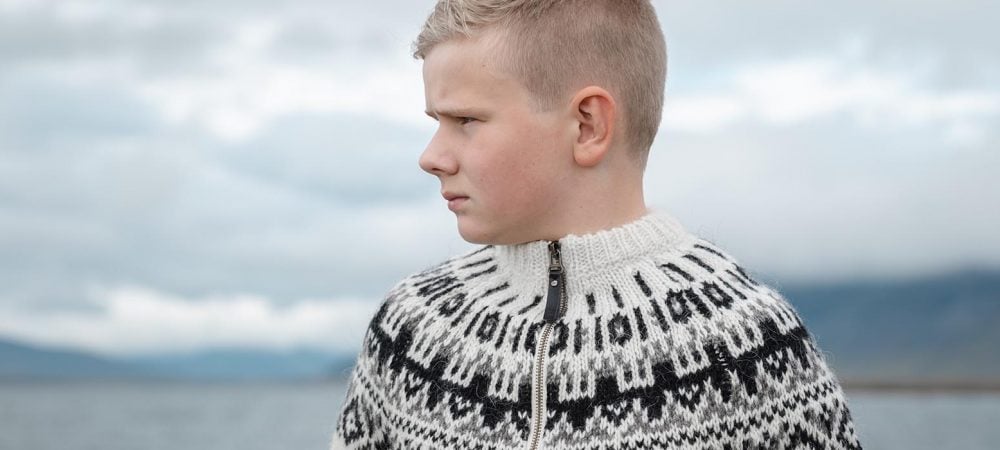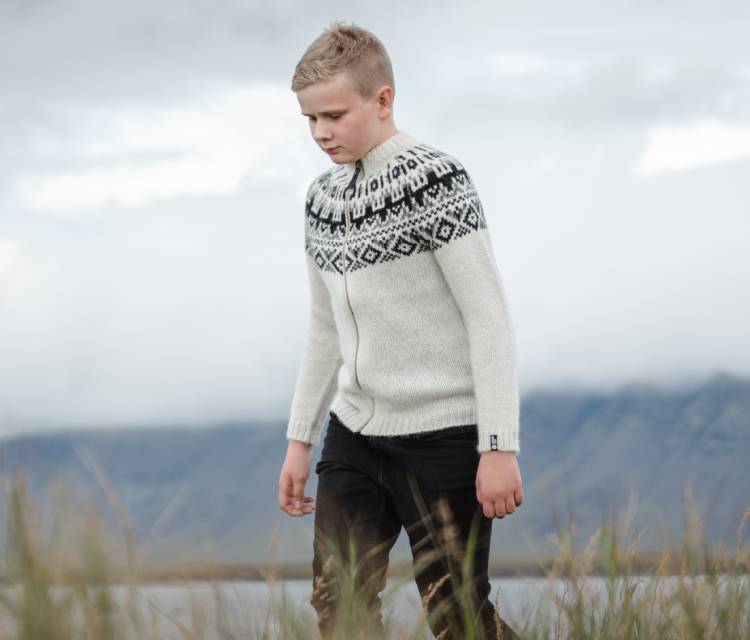Around the world we are seeing that knitting is not just for your grandmother anymore. A quick internet search will show you photos of celebrities with knitting needles in hand, from Marilyn Monroe to Catherine Zeta Jones to Sarah Jessica Parker—even Russell Crowe! A practice that is both traditional and contemporary, knitting is both a productive hobby and a calming pastime. It is an outlet for your creativity, and when you don’t feel particularly creative there are lots of beautiful patterns for you to follow. And the end result of knitting is a beautiful sweater, scarf or blanket that can adorn your body or your home—and keep you warm and cozy.
For Icelanders, knitting has never been just for the grandmothers. In fact, it has been an important part of Icelandic lifestyle and economy for more than 500 years. The practice is believed to have migrated from England, the Netherlands, and Germany at around the turn of the 16th century. Soon after the craft came to Iceland, Icelandic knitwear in turn migrated back into Europe. Archaeological excavations have uncovered evidence of Icelandic knitwear in other parts of Europe; for example, a pair of mittens knitted in Iceland around 1700 were discovered in Copenhagen, Denmark. Documents have been found, dating from the 17th and 18th centuries, which reveal that sweaters, mittens, and socks numbering in the hundreds of thousands were knit in Iceland and exported abroad. Historical documents suggest that knitting was an important part of Iceland’s economy. Knitting was done by both women and men, and it was joked that children learned to knit as soon as they learned to crawl. Knitting as a a source of revenue in Iceland has gone through a number of changes over the centuries, as industrialization and automation had impacts on wool production.
Wool Blankets and Sweaters knitted in Modern Iceland
Despite the changes in processes, the practice of knitting remains a part of the culture, whether as an economic support or as a popular leisure activity. It is safe to say that in modern Iceland, nearly every adult can make a scarf or a pair of socks, at the very least. Icelandic students learn to knit at school as part of their crafts education. In a café in downtown Reykjavík, it is quite normal to see babies wearing hand-knit buntings or jumpsuits made from the Icelandic wool known as lopi, as many grown-ups sit knitting while they enjoy their coffee and conversation. And while not everyone is making their own clothes, the Icelandic sweater known as lopapeysa is nevertheless a common fashion staple in stylish urban settings. Beautiful sweaters are an expression of the culture and an important part of daily life, both in work and in leisure activities. ICEWEAR’s line of knitwear is a great example of how Icelandic cultural expression combines with contemporary style and function, exemplifying the spirit of self-sufficiency that defines Icelandic people.
Today, the Icelandic style of knitting can be found not only in sweaters but in all kinds of clothing, and even on blankets. The pleasure in knitting is not just the process of creating beautiful pieces with yarn, but also exploring the effects created through the combining of different colors. The combinations of colors can be bold and dramatic when the colors chosen have high contrast. They can also be calm and soothing when the color combinations come from neutral or monochromatic palettes. Whether you knit for yourself or choose to buy your knitwear, you can’t help but appreciate the intricate beauty in the interplay of yarns and colors.







